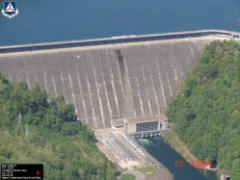Staff Sections
Main Content
NC Wing, Civil Air Patrol, Conducts No-Notice Exercises
Two Aircrews Respond Rapidly, But Safely
5/8/2011–Burlington, NC–
Maintaining proficiency is a mainstay in CAP activities, but severely restricted budgets have placed a heavy financial burden on the NC Wing. The number of missions to which wing members have been called upon to execute have made a significant drop in number—especially due to the fact that the U.S. Air Force no longer monitors the VHF Emergency Channel of 121.5 MHz, which signal could mean a downed aircraft or an inadvertent beacon activation. Either way the beacon needed to be silenced.
As of late, the cost of maintaining flight proficiency has fallen upon the aircrews themselves to cover the expenses of maintenance and fuel; but the NC Wing is holding its own when it comes to aircraft utilization.
Practice makes perfect—so when training funds are available, making the best use of these funds is essential.
Capt. Chris Bailey, NC Wing’s Director of Emergency Services, was granted training funds and was determined to put this bonus to good use. “The ES staff was determined to make the best use of the funding made available to us, and at the same time, offer our benefactors a living example of just how proficient we are,” Bailey said.
Maj. Andy Wiggs served as Mission Incident Commander.
Bailey had enough funding for two practice missions, so the plan was to stage “No-Notice” Exercises." Here are the results:
April 23, 2011
Mission No. 1: NC Coastal Area: Simulated downed aircraft with a pilot having bailed out in the Morehead City Area. 121.775 Training Beacon was used for electronic search training. A parachute was used for visual search training.
· 1115: Alert Page Transmitted
· 1122: Phone call confirmed aircrew ready
· 1215: Wheels up on N916CP
Aircrew Crew:
Dennis O Faver, Lt. Colonel - PIC
William J Sullivan, 1st Lt. - Observer
David F Harrison, Major – Scanner
This exercise demonstrated to true challenges of having to search for a small target in a residential area. According to Bailey the aircrew was given incorrect grid coordinates to simulate an airplane going down in one area and the pilot being located in another. Bailey assisted the crew in air-to-ground coordination once they located the target.
Mission No. 2: Asheville Area Homeland Security Photo Reconnaissance Mission:
· Target No. 1: Calderwood Dam
· Target No. 2: Western Carolina University
· 1300: Alert Page Transmitted
· 1310: Phone call confirmed air crew ready
· 1315: Second aircrew ready and on standby
· 1400: Wheels up on N727CP:
Aircrew:
Raymond G Davis, Lt. Colonel - PIC
Matthew D Urbanek, Lt. Colonel - Observer
Gary D Lux, Captain - Scanner
Wiggs stressed the fact that both of these sorties ran like clockwork. “Operational Risk Management (ORM) played a significant role in assuring that this mission was executed quickly—but safely.”
At the conclusion of these exercises Bailey said, “Both exercises exceeded our expectations and showed the importance of how the local squadrons training for mission readiness is key to a successful mission.
My thanks goes out to all the participants and members that helped in the execution and planning of this exercise.”
Sub Content
- My Account
- Member Login
- Register for an account
Search
- Recent Articles
- Cunningham Field Composite Squadron Hosts Air Operations Training and Familiarization
- NC Wing CyberPatriot Preliminary State Award Winners Announced
- Tar River Composite Squadron Cadets Compete in CyberPatriot Competition
- Civil Air Patrol Remembers Veterans for Christmas
